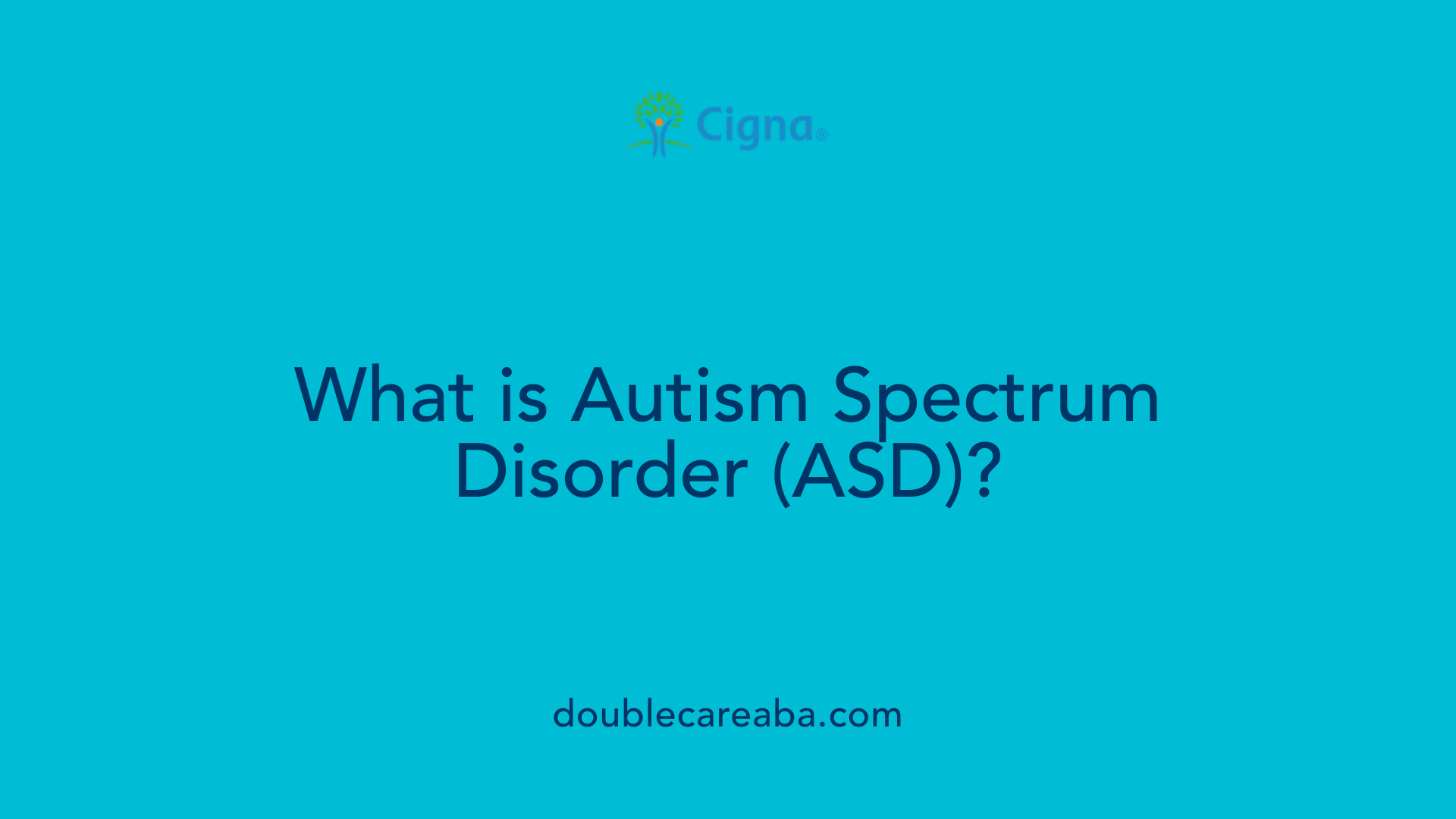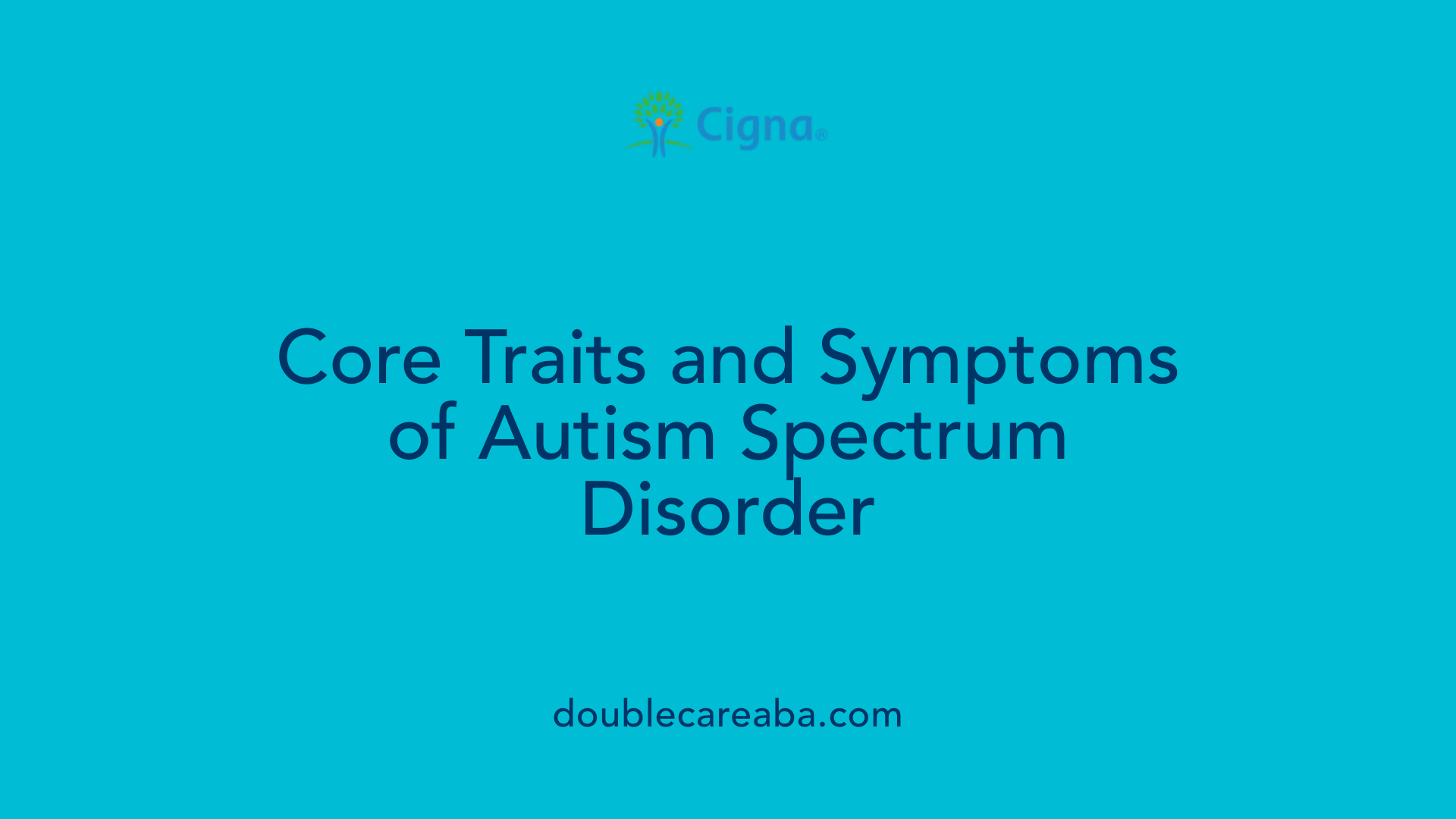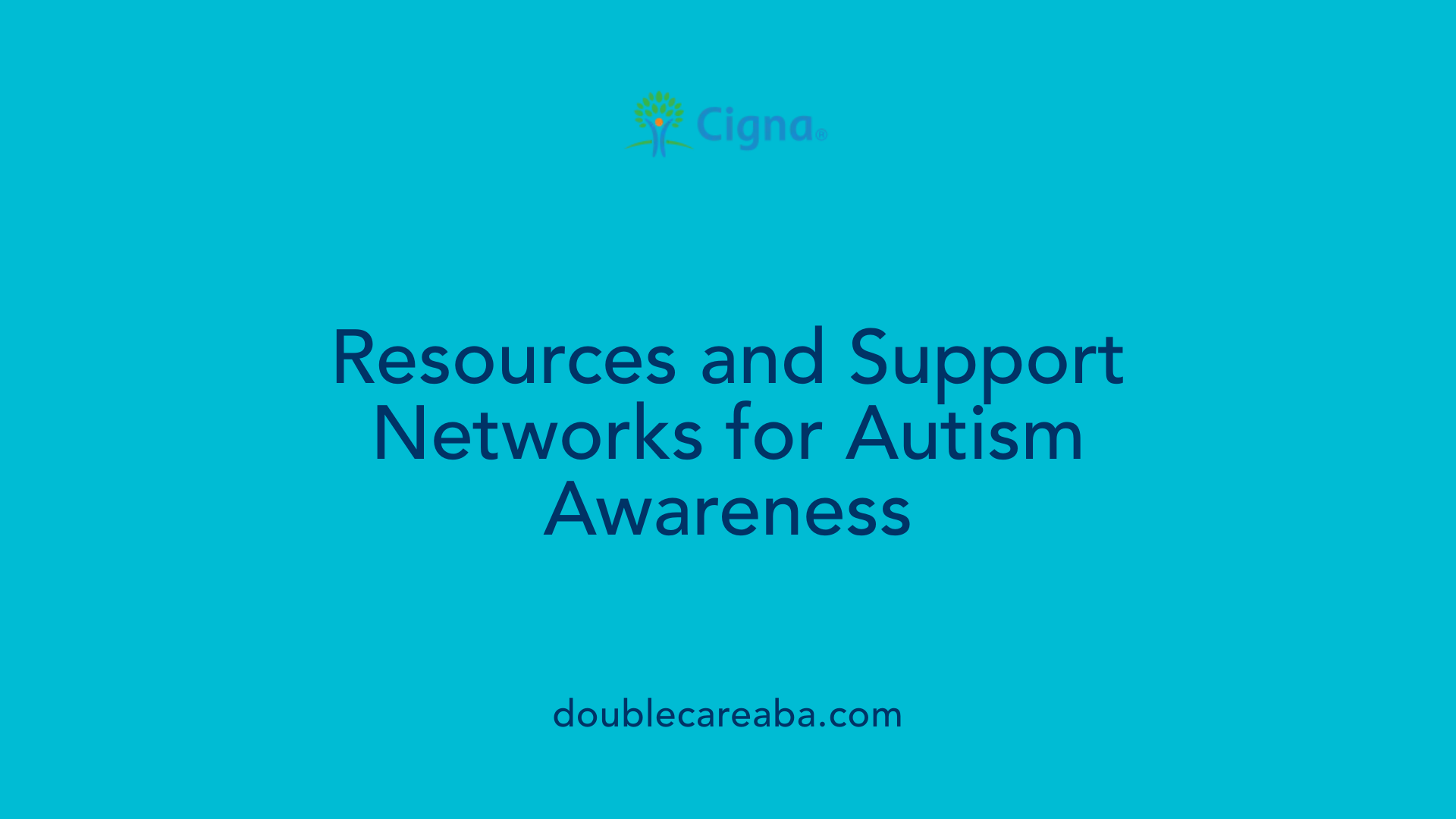An Overview of Autism Spectrum Disorder
Autism Spectrum Disorder (ASD) is a complex neurodevelopmental condition that manifests in early childhood and continues throughout life. It affects how individuals perceive and interact with their environment, influencing communication, social skills, behavior, and interests. Recognized as a spectrum, ASD encompasses a wide range of symptoms and severity levels, making each person's experience unique. This article explores ASD's characteristics, causes, diagnosis, treatment, societal impact, and resources available to foster awareness and support.
Defining Autism Spectrum Disorder (ASD)

What is Autism Spectrum Disorder (ASD)?
Autism Spectrum Disorder, commonly known as ASD, is a broad term used to describe a variety of neurodevelopmental differences that influence how a person perceives and interacts with the world. This condition is characterized by challenges in social communication, interactions, and the presence of restricted or repetitive behaviors.
ASD begins early in childhood, often before the age of 3, and can sometimes be detected as early as the first year. Its symptoms and severity can vary widely from person to person, which is why it is called a spectrum. Some individuals may have significant difficulties with language and social interaction, while others might excel in certain areas but still exhibit specific repetitive behaviors or intense interests.
While the exact causes of ASD remain unknown, research supports that genetics play a crucial role with many gene variations involved. Environmental factors during prenatal development may also contribute, but they account for a smaller part. Importantly, ASD is not caused by vaccines or parenting styles.
Nature and scope of ASD
Autism encompasses a diverse range of traits, including difficulties with eye contact, responding to social cues, understanding emotions, and maintaining conversations. Repetitive actions like hand-flapping or lining up toys, along with intense focus on particular interests, are common features.
The disorder affects all genders, races, and ethnicities, although boys are diagnosed approximately four times more often than girls. Because of its variability, two people with ASD can have vastly different experiences and support needs.
Lifelong nature of ASD
Autism is typically a lifelong condition. Early diagnosis and intervention, such as behavioral therapy, speech and occupational therapies, are crucial for improving skills and quality of life. Although ASD does not have a cure, many individuals manage their symptoms effectively and lead fulfilling lives with appropriate support.
Support needs may change over time, and some people may experience co-occurring conditions like anxiety, epilepsy, or gastrointestinal issues. As individuals age, different challenges and strengths may emerge, making ongoing adaptation and support essential.
Differences across the spectrum
The term 'spectrum' reflects the wide range of experiences among people with ASD. Some may have minimal support needs, functioning well with little intervention, while others require intensive support for daily living.
Based on severity, ASD is classified in guidelines like the DSM-5 into levels indicating the amount of support needed: Level 1 (requiring support), Level 2 (requiring substantial support), and Level 3 (requiring very substantial support).
This variability underscores the importance of personalized diagnosis and tailored intervention plans. Understanding the spectrum emphasizes acceptance of neurodiversity and recognizes individual strengths alongside challenges.
Summary Table:
| Aspect | Description | Examples |
|---|---|---|
| Causes | Usually genetic, environmental factors less known | Gene variations, prenatal influences |
| Symptoms | Social, communication, behaviors | Reduced eye contact, repetitive motions |
| Lifespan | Usually lifelong | Support adapts over time |
| Variability | Wide-ranging severity and traits | Different support needs and skills |
| Diagnosis | Based on behavior and development | Observations, standardized tools |
Understanding autism as a spectrum helps foster greater acceptance and supports personalized approaches to help individuals thrive.
Core Characteristics and Symptoms

What are the main symptoms and characteristics of autism?
Autism spectrum disorder (ASD) presents through a variety of behaviors and traits that influence how individuals communicate, interact, and behave.
A primary feature is difficulty with social communication and interaction. For example, autistic people often struggle with making eye contact, understanding facial expressions, and sharing interests or emotions with others. They might not respond to their names by nine months or show little interest in social games like peekaboo by the age of one. Difficulty forming and maintaining friendships is also common, along with challenges in understanding social cues.
Another core aspect of autism involves restricted and repetitive behaviors. These can include lining up toys in specific orders, repeating certain phrases or sounds—a behavior known as echolalia—and engaging intensely with particular interests or activities. Some may exhibit stereotypical movements such as hand flapping, rocking, or spinning, often as a way to self-calm or express excitement.
Symptoms usually become evident within the first two years of life, with some children showing signs as early as six months. In some cases, children develop normally initially but then experience regression between 18 and 24 months, losing previously acquired skills.
The presentation of autism varies considerably among individuals. Some may have severe impairments, requiring substantial support, while others function at higher levels with only subtle signs. Delayed speech, unusual reactions to sounds or textures, and resistance to routine changes are common features.
Overall, autism influences how individuals perceive the world and interact with others. Early diagnosis and tailored interventions can help improve communication skills, social understanding, and daily functioning for many affected persons.
Understanding Causes and Risk Factors
What are the causes and risk factors associated with autism?
The origins of autism spectrum disorder (ASD) are complex, involving a mix of genetic, prenatal, environmental, and biological factors. Extensive research indicates that genetic influences are significant, with many gene mutations, variations, and syndromes increasing susceptibility. Conditions such as fragile X syndrome, Rett syndrome, and Down syndrome are genetically linked to a higher risk of developing autism.
In addition to genetics, several prenatal and environmental factors have been associated with increased ASD risk. These include advanced parental age at conception, maternal health issues like obesity and diabetes, immune system disorders, exposure to air pollution, pesticides, and specific medications taken during pregnancy, such as valproic acid or thalidomide.
The interaction between genes and environmental factors also plays a crucial role. For example, maternal immune responses or neurodevelopmental disruptions during pregnancy may influence brain development. These combined influences can affect how the brain forms and functions early in life.
Overall, autism is believed to stem from multiple influences that act together, impacting brain development in a way that leads to the characteristic symptoms. While the precise causes remain under investigation, current evidence points to a multifaceted origin rooted in both genetic predisposition and environmental exposures.
Diagnosis: Procedures and Criteria

How is autism diagnosed, and what are the criteria?
Diagnosing autism involves a detailed process that centers around understanding a child's developmental history and current behavior. Typically, a team of specialists such as a developmental pediatrician, psychologist, neurologist, or psychiatrist conducts a comprehensive developmental evaluation.
During this assessment, they gather information from parents or caregivers about early developmental milestones and any concerns noticed in social communication, behavior, and interests. Observations are made through direct interaction with the child, focusing on behaviors related to social reciprocity, communication skills, and repetitive or restrictive behaviors.
To standardize this process, clinicians often use behavioral assessments and screening tools, including the Autism Diagnostic Observation Schedule (ADOS), M-CHAT (Modified Checklist for Autism in Toddlers), and other validated instruments.
The diagnosis is guided by the criteria outlined in the Diagnostic and Statistical Manual of Mental Disorders, Fifth Edition (DSM-5). These criteria specify that a person must exhibit persistent deficits in social communication and social interaction across multiple contexts—such as difficulty sharing interests, problems with nonverbal communication like eye contact and facial expressions, and challenges developing or maintaining relationships.
Additionally, individuals show restricted, repetitive behaviors, such as stereotyped movements, intense interests, or insistence on sameness. These symptoms typically originate in early childhood, although they may become more noticeable as demands for social skills increase.
Importantly, the symptoms must cause significant impairment in everyday functioning and cannot be better explained by other conditions, such as intellectual disability or language disorders alone.
Since there is no biological test for autism, diagnosis relies entirely on these behavioral criteria, clinical judgment, and a comprehensive understanding of the child's developmental profile.
In summary, autism diagnosis is a careful integration of developmental history, behavioral observations, standardized assessments, and adherence to DSM-5 criteria, ensuring a thorough and accurate identification that guides appropriate support and interventions.
Prevalence, Societal Impact, and Trends
 Autism Spectrum Disorder (ASD) affects millions of people worldwide, with prevalence rates steadily rising over the past two decades. Recent data suggests that approximately 1 in 31 children in the United States have been diagnosed with ASD as of 2022. This is a notable increase from about 1 in 150 children in the early 2000s, reflecting broader diagnostic criteria, increased awareness, and improved screening methods.
Autism Spectrum Disorder (ASD) affects millions of people worldwide, with prevalence rates steadily rising over the past two decades. Recent data suggests that approximately 1 in 31 children in the United States have been diagnosed with ASD as of 2022. This is a notable increase from about 1 in 150 children in the early 2000s, reflecting broader diagnostic criteria, increased awareness, and improved screening methods.
ASD occurs across all racial, ethnic, and socioeconomic groups, but it is diagnosed more frequently in boys than in girls. Studies show a male-to-female ratio of roughly 4.5 to 1, meaning boys are significantly more likely to be diagnosed.
The widespread rise in autism prevalence has substantial societal implications. It places greater demands on healthcare, educational, and social support services. Early intervention efforts, while beneficial, require significant resources to support affected individuals and their families.
Economically, the impact of autism is immense. Estimates project that ongoing costs related to healthcare, educational services, and productivity losses could surpass $5.5 trillion globally by 2060. This highlights the critical need for continued research, early diagnosis, and effective support systems.
In summary, the increasing prevalence of ASD underscores its importance as a public health concern. Addressing its societal and economic effects necessitates coordinated efforts across research, policy, and community services to ensure that individuals with autism receive appropriate support to thrive.
Effective Treatments and Support Strategies
What are the treatment options and management strategies for autism?
Managing autism involves a variety of approaches tailored to the individual’s unique needs. The primary goal is to reduce symptoms that interfere with everyday life and to develop skills that promote independence and well-being.
One of the most widely supported methods is behavioral therapy. Applied behavior analysis (ABA) is an evidence-based approach that uses reinforcement techniques to encourage positive behaviors and discourage problematic ones. ABA can help improve communication, social skills, and adaptive functioning.
In addition to behavioral therapy, speech, occupational, and physical therapies are frequently used to target specific developmental areas. Speech therapy can assist with language and communication skills, while occupational therapy helps with daily living skills and sensory sensitivities. Physical therapy may be beneficial for movement and coordination issues.
Educational programs play a vital role in supporting learning and social development. Structured approaches like TEACCH (Treatment and Education of Autistic and Communication related handicapped Children) utilize visual supports and structured routines to make learning accessible and predictable. Social-relational interventions focus on improving social interactions, emotional understanding, and relationship-building skills.
While there are no medications that cure autism, some drugs can help manage co-occurring conditions. For example, medications may be used to address anxiety, hyperactivity, seizures, or depression. These are part of comprehensive support plans tailored for each individual.
Overall, successful management depends on a personalized, multidisciplinary approach. Interventions are most effective when they are delivered consistently across home, school, healthcare, and community settings. Support from family, educators, and healthcare providers is essential to help autistic individuals reach their full potential and enhance their quality of life.
Resources, Awareness, and Support Networks

What educational and awareness resources are available about autism?
A range of materials and campaigns are designed to increase understanding of autism spectrum disorder (ASD). The Centers for Disease Control and Prevention (CDC) provides extensive resources based on research, including the 'Learn the Signs. Act Early.' program. This initiative offers early identification tools and information for families, educators, and healthcare professionals. The CDC also offers scientific articles, data visualizations, and downloadable resources that promote awareness.
Autism Speaks is another major organization dedicated to autism education and support. They provide detailed information on autism symptoms, diagnosis, and available treatments. Their resources include educational videos, support guides, and community engagement activities like awareness walks and campaigns. These efforts aim to foster understanding, acceptance, and inclusion.
Both organizations offer various educational tools such as guidebooks, manuals, lesson plans, and training materials. Many resources are accessible online, free of charge, or available in digital formats. These materials help schools, communities, and families better support individuals with autism and promote a broader societal understanding of neurodiversity.
Organizations and community support
Community programs and local organizations play a vital role in providing support networks for individuals with autism and their families. They often host support groups, workshops, and training sessions. Many also advocate for policy changes and increased access to services.
Family and caregiver resources
For families and caregivers, resources include parent training programs, counseling services, and informational guides on navigating educational and medical systems. These tools empower families, helping them to better understand autism, develop routines, and advocate for their loved ones. Support networks also connect families with others facing similar challenges, fostering a sense of community and shared learning.
Autism and Societal Perceptions: Embracing Neurodiversity
How is autism viewed in society, and what are the modern perspectives?
In the past, society often misunderstood autism, viewing it primarily as a set of deficits or a medical condition to be fixed. Autistic traits were seen as something abnormal, and many efforts focused on normalization or curing the condition.
Today, however, there is a significant shift in how autism is perceived. The neurodiversity paradigm now recognizes autism as a natural variation of human brain development. Instead of framing autism solely as something to be treated or eradicated, this perspective emphasizes acceptance, understanding, and the value of different ways of thinking, feeling, and interacting.
Supporters of neurodiversity advocate for societal changes that promote inclusivity. This includes awareness campaigns, inclusive education practices, and employment policies that accommodate diverse needs.
Creating environments where autistic individuals can thrive promotes the idea that their differences contribute positively to society. It encourages appreciation for unique perspectives and skills, fostering a culture that celebrates neurodiversity rather than suppressing it.
As a result, modern perspectives aim to reduce stigma and barriers, advocating for acceptance and full participation of autistic individuals in all aspects of life. Embracing neurodiversity champions a society that values human differences and recognizes the strengths that come with neurological variation.
Fostering a Supportive Future for Autism Awareness and Inclusion
Understanding autism as a spectrum that encompasses a broad range of behaviors, traits, and support needs is crucial in fostering a more inclusive society. With ongoing research, early identification, tailored interventions, and a shift towards acceptance and neurodiversity, individuals with ASD can lead fulfilling lives. Education, community support, and societal awareness are key to breaking down barriers, reducing stigma, and promoting environments where every individual is valued and understood. Continued investment in resources and policies will help ensure that support for autistic individuals adapts to their evolving needs across the lifespan, creating a future of greater inclusion and opportunity.














